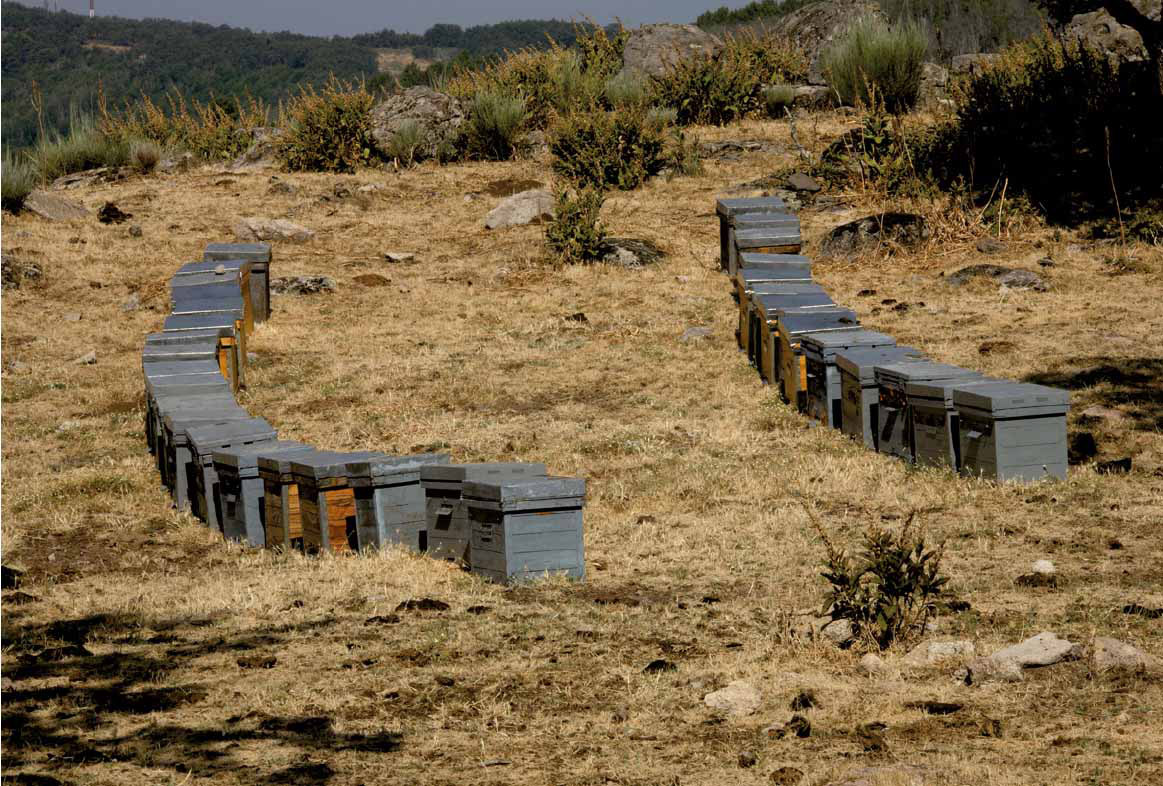
A truly fascinating subject is the use of both wax and resin in the kitchen.
Wax is a fatty substance secreted from the glands of young worker bees. They use it to make honeycombs and to seal the cells when they are filled with honey.
The wax used here is that which walls up the cells, to be exact, the lids. When this wax is removed, it contains honey, pollen, propolis and some impurities (the remains and legs of bees). But everything contributes to the flavour of the wax. In fact, when you visit honeycombs, the beekeeper offers you a piece of honeycomb to chew, like chewing gum, until only the wax stays in your mouth, and you end up spitting it out. This is the honey and wax flavour that we wanted to achieve. We wanted to incorporate the pleasant aroma of the smell of natural wax candles in a dish. To most people this may seem a rare ingredient, but I can assure you this flavour is present in many sweets and candies. As to types of dish, wax is as often an ingredient in savoury as well as sweet dishes. We spent a long time developing a wax ice cream, where wax is involved in the preparation of the cream for the ice cream.
We also came up with a more complex dish that we initially called, ‘Wild Duck (also made with pigeon outside the hunting season) with Lost Wax’. The poultry is prepared with sauces or salsas of honey and pollen, but a gel with oil and wax is separately prepared. When served, a piece of wax gel is placed on one side of the dish (previously cooled, so that it does not spread). This wax gel melts at the table, in front of the customer, with the help of a small torch. The olfactory sensation caused by the smell of melting wax is very pleasant. This melted wax mixes with the juices and the sauce accompanying the bird.
On the other hand, historically, resin is perhaps more related to gastronomy, and more specifically to the world of wine. Firstly, there is the very traditional taste associated with artisan ‘boots’ or skins that, for centuries, have been used for wine conservation, incorporating resin, a substance extracted from pine forests, which is treated to remove its flavour, and then placed on the skin or ‘boot’. On the other hand, the taste of resin is not only for conservation, as is typified in some wines from Greece, for example, Retsina, which is a white wine that must contain at least 85% of the native variety Salvatiano, to which pine resin is added. Adding substances to wine, including resin, dates from ancient times, and the taste for it has remained on Greek palates to the present day.
